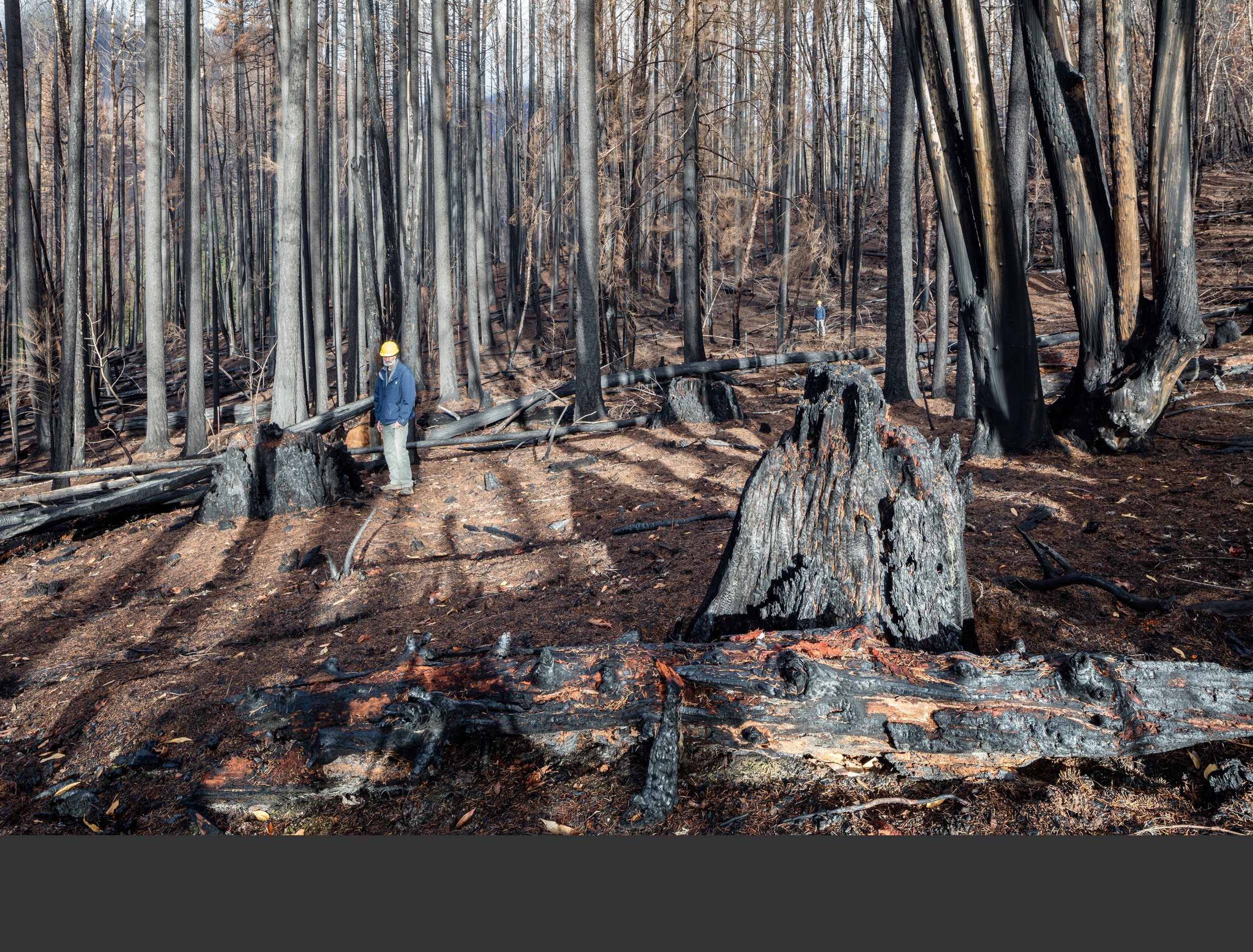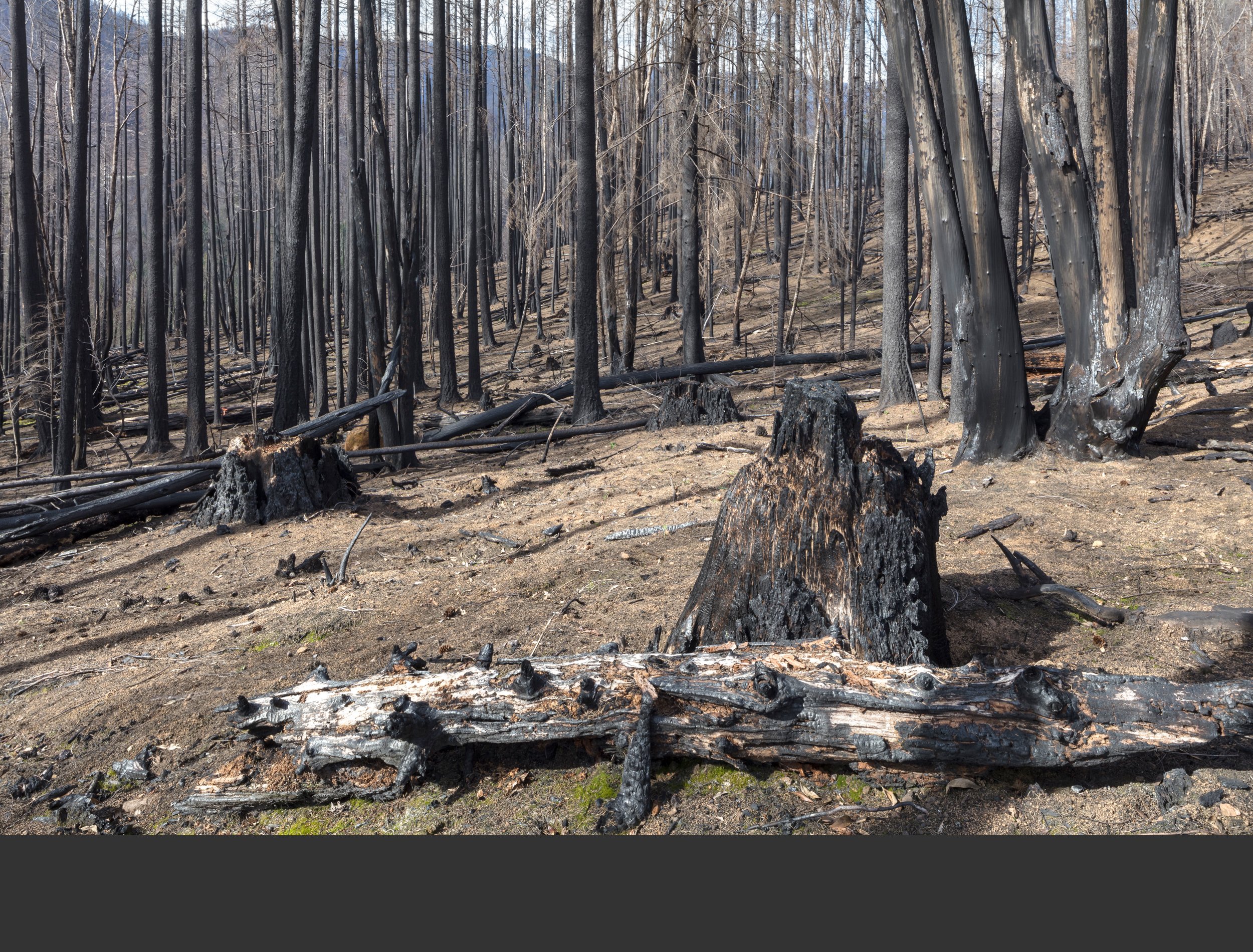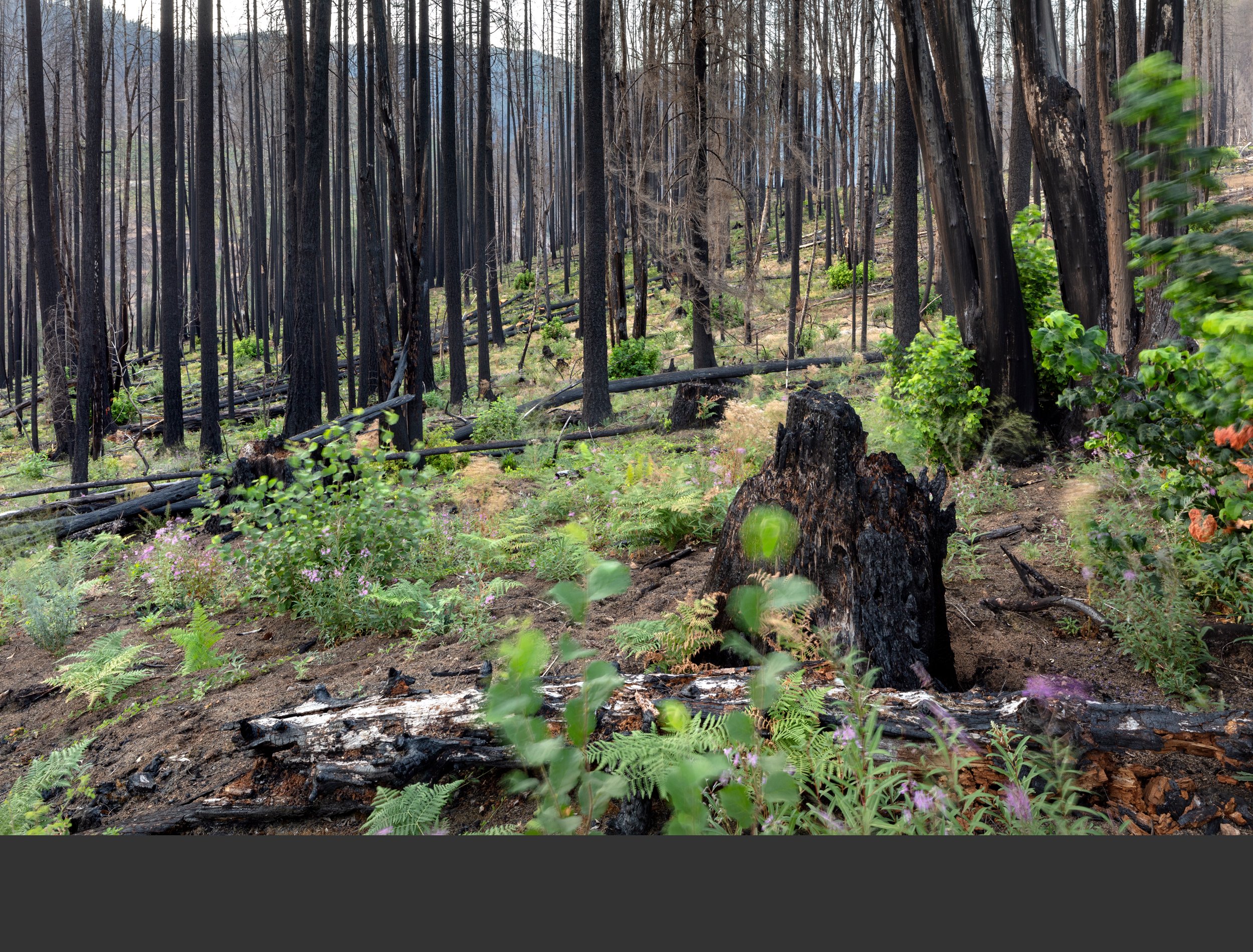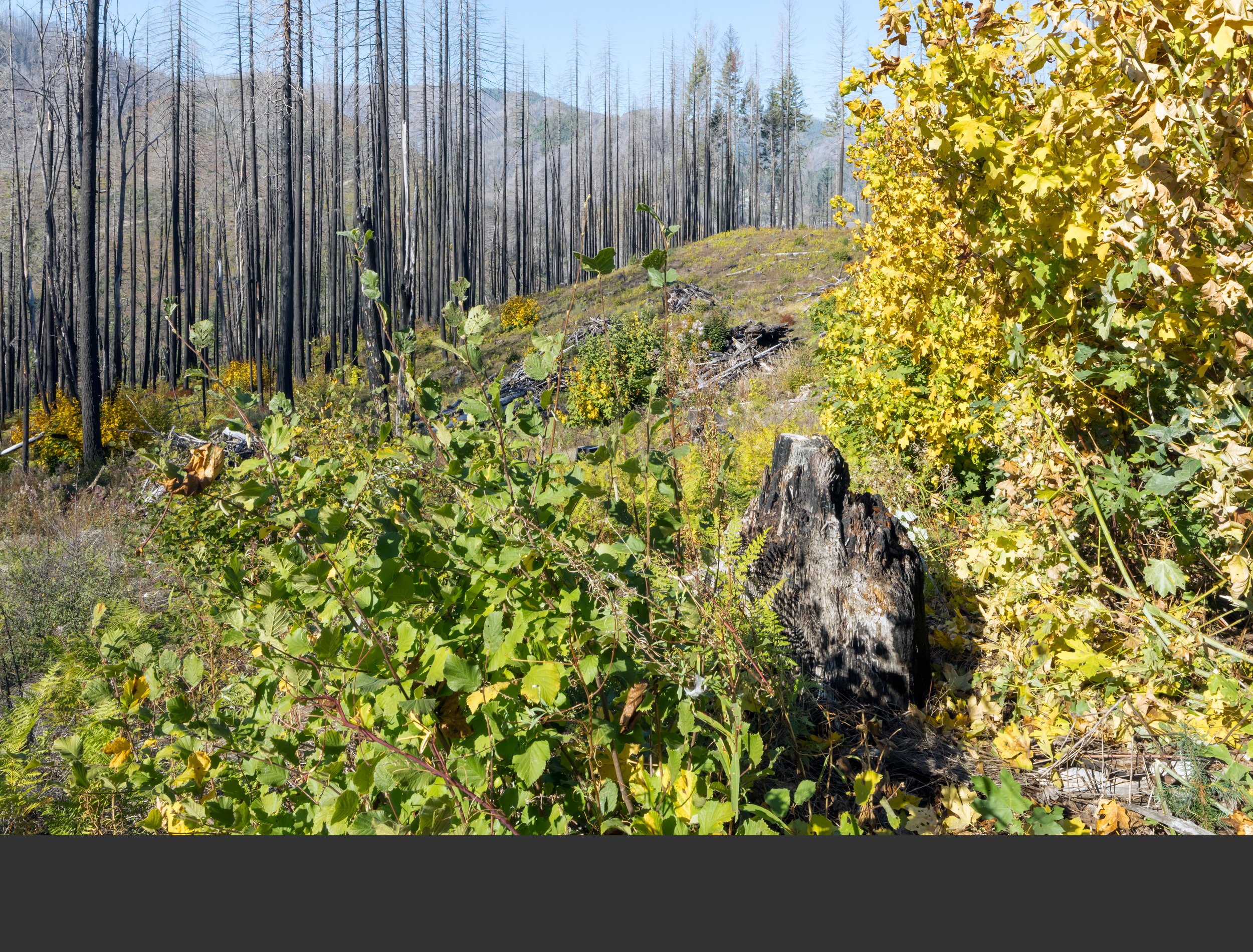Introduction to Chronosequence:
Repeated photography of the same scene over seasons and years has long been used by artists and scientists to document landscape change. This technique is especially relevant after major scene-changing events, such as wildfire, volcanic eruptions, and human land use activities. For this project, we selected 25 distinct photopoints that represent different forest conditions. During the first three years we photographed each photopoint 17 times in order to record the changing landscape following the fire. Here is a sampling of the most interesting changes. Note the abundance of vegetation, its changes over seasons and years, the collapse of dead and living trees, and signs of the uncertain future – climate change, invasive species, and intensive forestry. And note your own emotional responses as you view the changes in the land.
Photopoint BRCE07
Rotten stumps and logs on the ground are legacies of the old forest logged here many decades ago. The 2020 fire cleared the understory and killed all the conifers in this dry, upland site, revealing the complex forest of young conifers and the cluster of large bigleaf maple trunks on the right. This photopoint was chosen in part for the visual qualities of its depth of field, but, in selecting it for chronosequence photography, we did not anticipate the dramatic change that took place a year after the fire.







